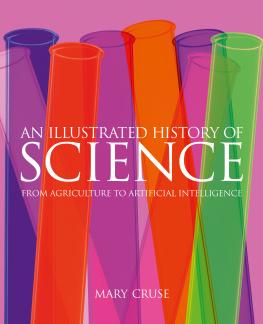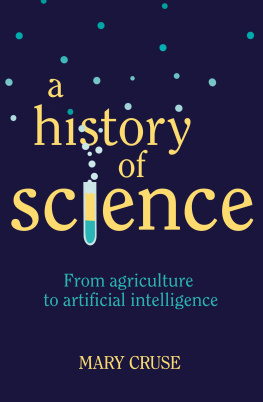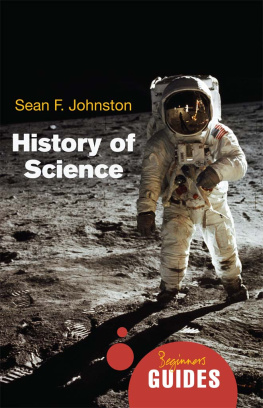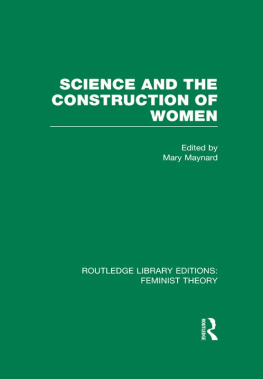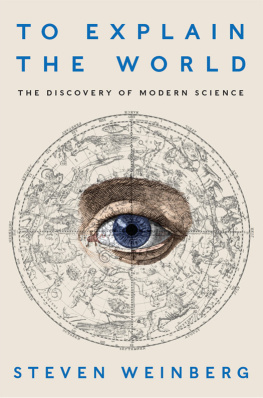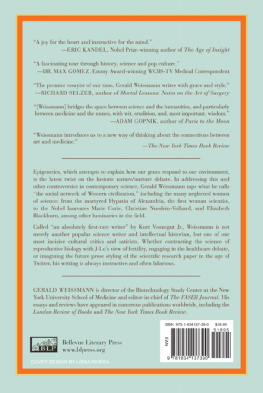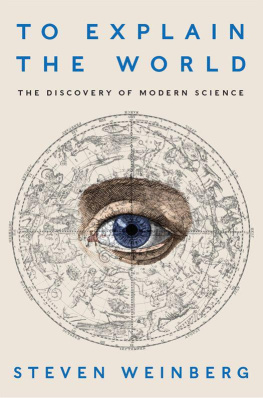
PREFACE
L ETS START WITH THE SIMPLE STUFF: what is the history of science?
Well, as it turns out, thats not actually such a simple question after all. In its most basic terms, the history of science is the study of how human beings have developed scientific theories, disciplines and knowledge over time. But, of course, what science is the wider context and understanding of its purpose has also shifted over time. Throughout the centuries, our conception of what constitutes science has developed; from ancient natural philosophers and medieval alchemists to Renaissance scholars and Enlightenment reformers, we have travelled a long way to arrive at the modern conception of science and scientists that we recognise today.
Given that science is a fluid concept, its not so surprising that the history of science is also a tricky topic to pin down. In his seminal 1962 text On the Structure of Scientific Revolutions, the American physicist Thomas Kuhn established the idea of the history of science as a series of paradigm shifts. Under Kuhns model, scientific history is the process through which new theories gradually rise to prominence until they take over and replace the previous scientific paradigm; for example, quantum physics overtook Newtonian mechanics in the early 20th century. With this notion, Kuhn did away with the idea that the history of science represents a steady, cumulative march towards progress. In reality, the history of science is messy, plagued by flawed ideas and long periods of stagnation.
As well see, science itself is as complex and multifaceted as the problems it seeks to unpick. To make sense of it, well be looking at the process of knowledge-making chronologically and in the context of specific disciplines. But in order to talk in any broad sense about the history of science, it is necessary to omit large parts of the story, and there are many important and worthy topics and events that were not able to cover within these pages.
The slipperiness of the subject matter, the vastness of the story there are many considerations to bear in mind when exploring the history of science. But, perhaps most importantly of all, we must acknowledge that the history of science is not a static product; it is constantly shifting and evolving. This book would look very different if it were written in a few decades time, and indeed, well be exploring some of the ways in which future historians of science might look back on the era we are currently experiencing.
Ultimately, the period in which we currently live is just another stop on the long timeline of scientific enquiry. As you read this book, you experience it amid a history that is still being created all around us, every day. To commandeer the words of the great American writer William Faulkner, The past is never dead. Its not even past.
And so the story continues.
Introduction
The most beautiful thing we can experience is the mysterious. It is the source of all true art and science. ALBERT EINSTEIN 18791955, THEORETICAL PHYSICIST
O UR STORY BEGINS WITH A BANG. It begins with the entirety of the universe clustered together; a hot, dense mass many times smaller than a pinhead. A fraction of a second passes, and the universe bursts free, expanding outwards into immensity. It continues to grow. Stars develop and die; entire galaxies are formed; solar systems spring up, and from the grand chaos that is the cosmos, our own little corner of the universe is born.
And that is where our story truly begins. On a little blue planet nestled in the Milky Way galaxy, a complex set of chemical phenomena align in just the right way so as to create something miraculous: life. Fast forward a couple of billion years, and one group of creatures splits into two. A succession of animals follow, each one looking more like the face you see in the mirror homo habilis, the handy man; homo erectus, the upright man until finally, around 300,000 years ago, homo sapiens, the wise man, is born.
We homo sapiens live up to our name. We are defined by our capacity for wonder, and for the short time that we have been on the planet we have stared up at the vast, infinite expanse of darkness above and have been filled with questions.
To be human is to wonder. This is our legacy as members of the human race. The impulse to ask questions is hardwired into our DNA, and for three hundred millennia our people have been searching for answers. Carl Sagan, the great American astronomer and science communicator, famously said that we are all made of star stuff, because the atoms that make up the human brain also make up the stars. And so, in a sense, the human brain is the universe attempting to understand itself, and humanitys way of understanding the universe is science.
The history of science is the history of human endeavour; a testament to our will to discover and our determination to uncover truth and meaning amidst the multitude of unknowns. Of course, that history is by no means neat. There are rapid accelerations and sudden stops, there are periods of silence, wrong turns and disagreements. But over the course of our journey, the wise man has slowly chipped away at the vast mysteries that surround us.
In the early days of our story, we did this by painting what we saw around us onto cave walls; these days, we do it by splicing genomes, sending rovers to Mars and smashing particles together in giant colliders. We still dont have all the answers; there is still so much left to discover. But if there is a common thread that runs through the entire history of science, it is this: all that we know about the world is the product of humanitys capacity for wonder.
You are part of this story, because you share in the spirit of curiosity that drives scientific progress. Our innate sense of wonder is what makes us human, and it is what makes us all of us scientists. And so, before you delve into the history of science, know this: the story is not over yet. It continues with all of us; it continues with you.
Part One
ANCIENT HISTORY
3000 BC5TH CENTURY
W HEN WE THINK ABOUT SCIENCE, we tend to turn to familiar tropes: futuristic machines, complex experimental set-ups, people in lab coats. But science has existed for far longer than any of that; in fact, you could say that human beings have been doing science in some form or another for thousands of years.
If we understand science to mean the pursuit of evidence-based knowledge, then its clear that humanity and science go back well before historical records began. So lets take a look at the early days of civilisation and the years leading up to it. In place of what we call science, another belief system prevailed. Early civilisations perceived a universe in which events were made to happen by deities, or in which spirits and energies governed the natural world. While they might not have understood the scientific method, they probably still questioned the world around them and created theories for how things worked. So what were some of the earliest examples of science as we understand it today, and what part did the scientific method play in the important developments and transitions that underpinned human progress?
Weve established that humanity has been asking questions for as long as our species has existed. Now, lets look at how we began using science to find answers.
The era of ancient history begins with the advent of writing in 3200 BC, and ends around 476 BC with the fall of the western Roman Empire. We tend to associate science in this period with Ancient Greece, but it was actually a global endeavour. From India to Egypt to Mesoamerica, the ancient period saw different groups of people begin making scientific progress in different areas and in different ways. One quality that united the early scientists whether they were philosophers in Ancient Greece or medics in Aryuvedic India was their desire to seek order in nature, and it was around this time that the first scientists began looking for consistent laws and structures that could explain the phenomena they observed around them. This wasnt science as we imagine it today. Protoscientific ideas were frequently though not always intermingled with religion and mysticism. But this type of thinking did represent an important shift away from the use of observation and logic solely to achieve practical goals, towards the pursuit of knowledge for knowledges sake. People were no longer content to merely observe and exploit the natural environment and physical phenomena; they wanted to
Next page
